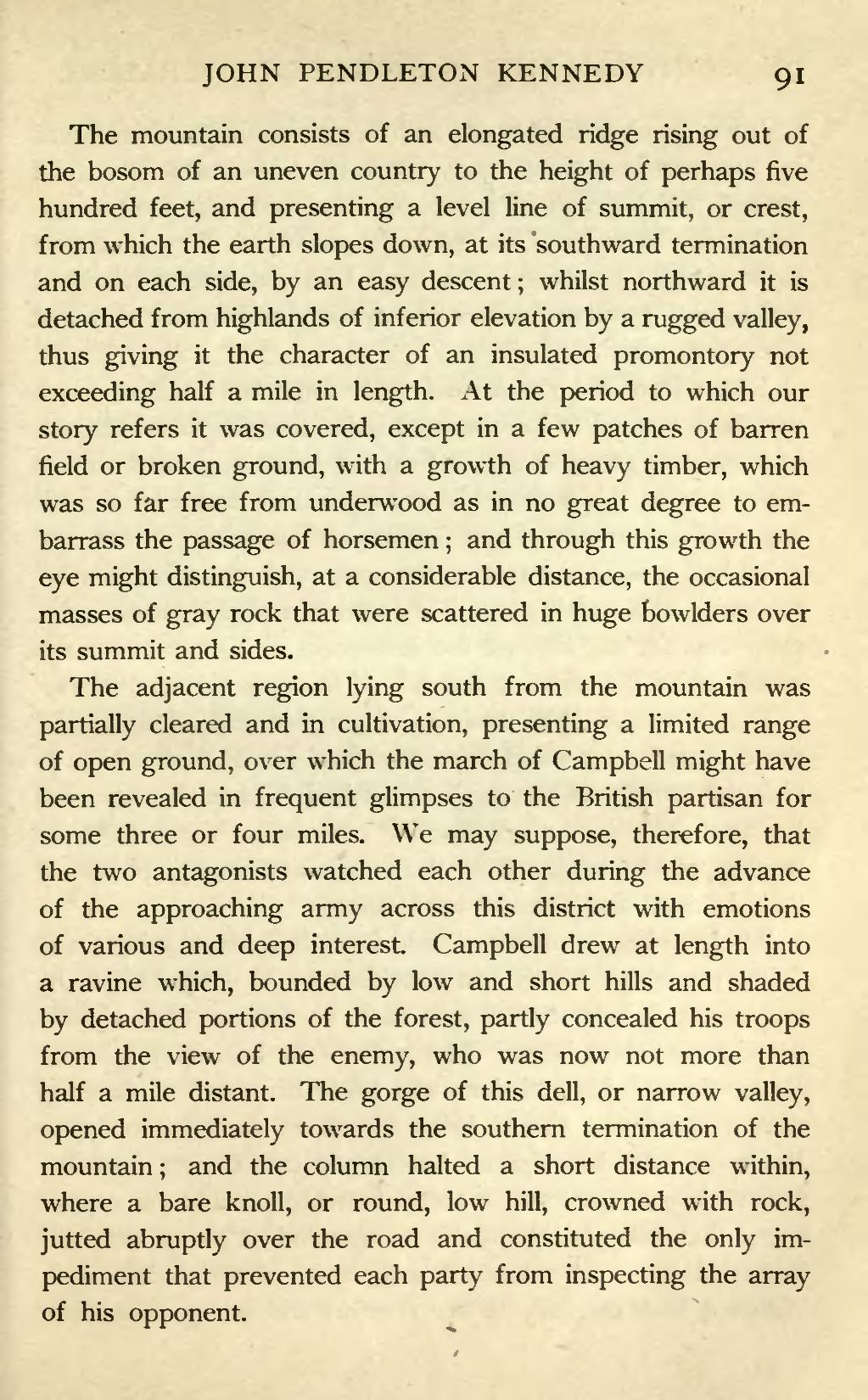The mountain consists of an elongated ridge rising out of the bosom of an uneven country to the height of perhaps five hundred feet, and presenting a level line of summit, or crest, from which the earth slopes down, at its southward termination and on each side, by an easy descent; whilst northward it is detached from highlands of inferior elevation by a rugged valley, thus giving it the character of an insulated promontory not exceeding half a mile in length. At the period to which our story refers it was covered, except in a few patches of barren field or broken ground, with a growth of heavy timber, which was so far free from underwood as in no great degree to embarrass the passage of horsemen; and through this growth the eye might distinguish, at a considerable distance, the occasional masses of gray rock that were scattered in huge bowlders over its summit and sides.
The adjacent region lying south from the mountain was partially cleared and in cultivation, presenting a limited range of open ground, over which the march of Campbell might have been revealed in frequent glimpses to the British partisan for some three or four miles. We may suppose, therefore, that the two antagonists watched each other during the advance of the approaching army across this district with emotions of various and deep interest. Campbell drew at length into a ravine which, bounded by low and short hills and shaded by detached portions of the forest, partly concealed his troops from the view of the enemy, who was now not more than half a mile distant. The gorge of this dell, or narrow valley, opened immediately towards the southern termination of the mountain; and the column halted a short distance within, where a bare knoll, or round, low hill, crowned with rock, jutted abruptly over the road and constituted the only impediment that prevented each party from inspecting the array of his opponent.
